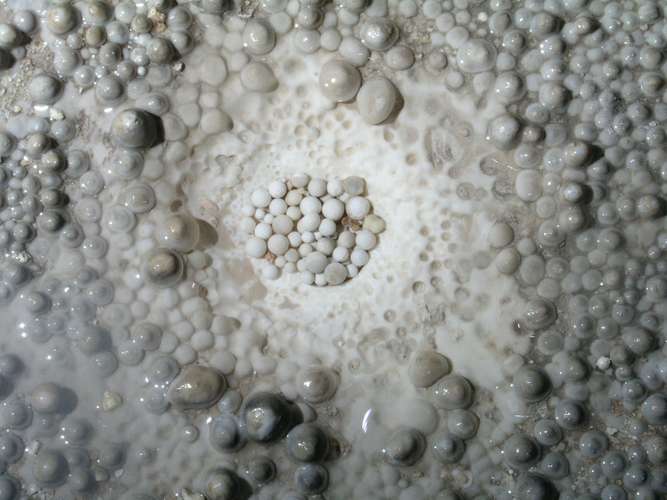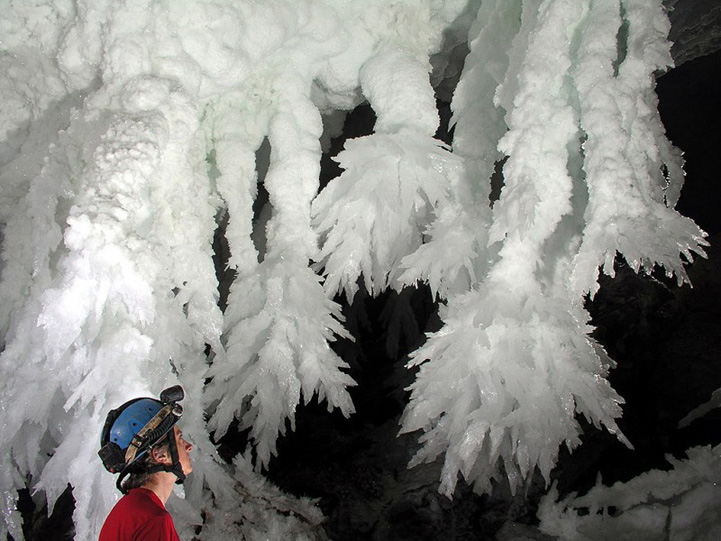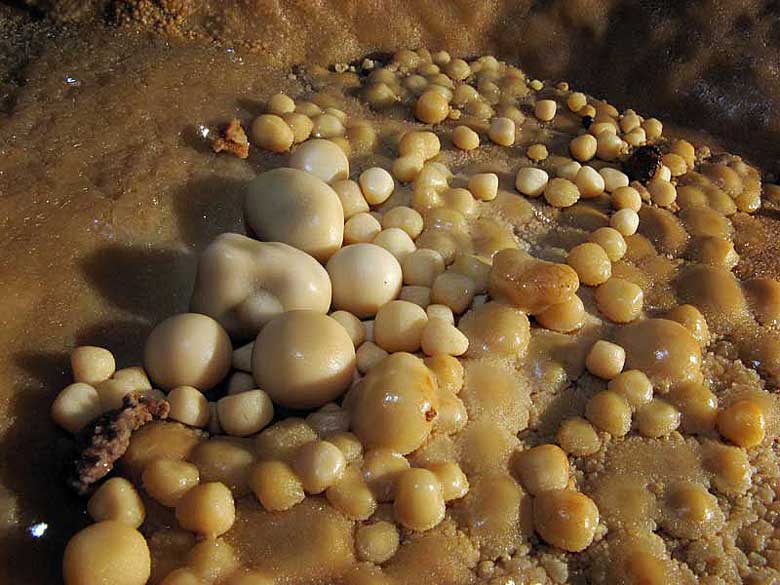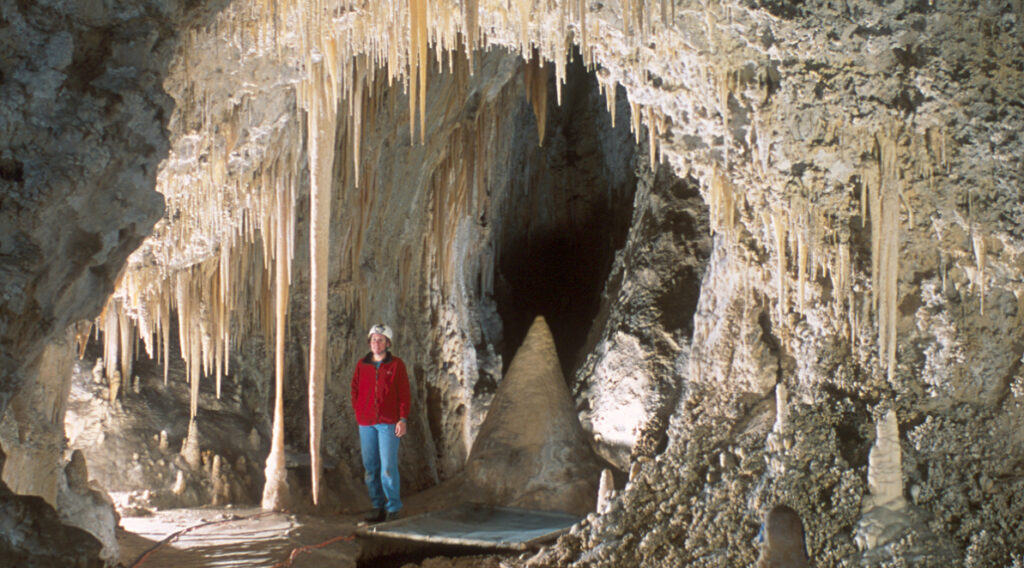A New Unified Model For Cave Pearls: Insights from Cave Pearls in Carlsbad Cavern, New Mexico, U.S.A.
The Cave of Lechuguilla is the deepest of the Americas, but it is most notable because of its unique shapes, its peculiar geology, and its impermanence.

Agave lechuguilla, a plant species found near his entrance, is called the cavern. Lechuguilla is located in the National Park of Carlsbad Caverns, New Mexico.
Entry to the cave is limited to licensed scientists, survey and excavation teams, and management trips for the national park service.
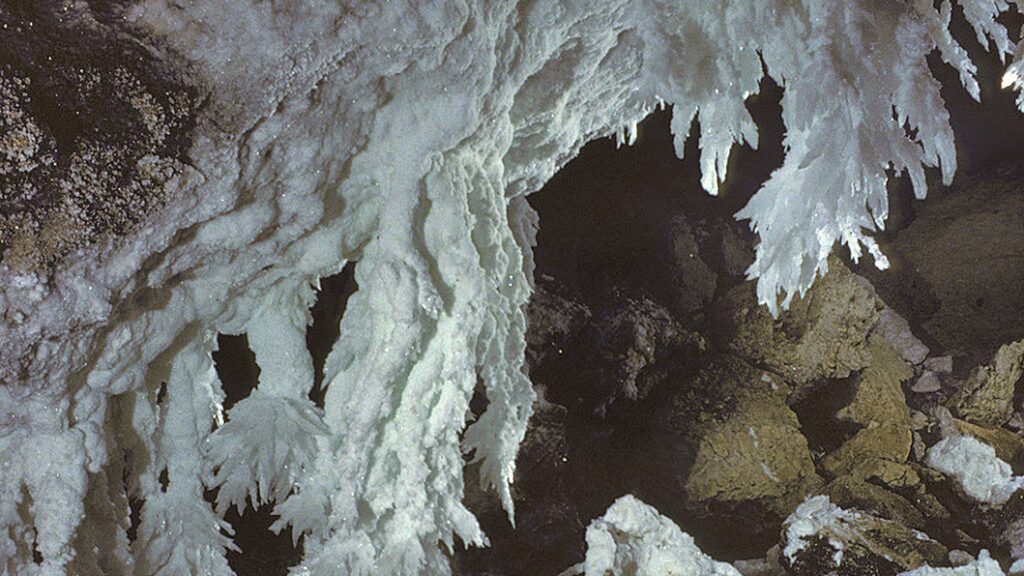
Lechuguilla Cave offers more than extreme size. It holds a variety of rare speleothems, including lemon-yellow sulfur deposits, 20 feet (6.1 m) gypsum chandeliers, 20 feet (6.1 m) gypsum hairs and beards, 15 feet (4.6 m) soda straws, hydromagnesite balloons, cave pearls, subaqueous helictites, rusticles, U-loops and J-loops.
Lechuguilla Cave surpasses its nearby sister, Carlsbad Caverns, in size, depth, and variety of speleothems, though no room has been discovered yet in Lechuguilla Cave that is larger than Carlsbad’s Big Room.
Scientific exploration has been conducted. For the first time, a Guadalupe Mountains cave extends deep enough that scientists may study five separate geologic formations from the inside.
The profusion of gypsum and sulfur lends support to speleogenesis by sulfuric acid dissolution.
The sulfuric acid is believed to be derived from hydrogen sulfide that migrated from nearby oil deposits.
Therefore this cavern formed from the bottom up, in contrast to the normal top-down carbonic acid dissolution mechanism of cave formation.
Rare, chemolithoautotrophic bacteria are believed to occur in the cave. These bacteria feed on the sulfur, iron, and manganese minerals and may assist in enlarging the cave and determining the shapes of unusual speleothems.
The claim in the BBC documentary series Planet Earth that these bacteria do not derive any energy from the sun is incorrect, as the majority are sulfur-oxidizing bacteria that utilize primarily atmospheric oxygen (derived from sunlight-driven photosynthesis) as an electron acceptor.
Other studies indicate that some microbes may have medicinal qualities that are beneficial to humans.
Lechuguilla Cave lies beneath a park wilderness area. The cave’s passages may extend out of the park into adjacent Bureau of Land Management (BLM) land.
A major threat to the cave is proposed gas and oil drilling on BLM land. Any leakage of gas or fluids into the cave’s passages could kill cave life or cause explosions.
Cave pearl
Small, almost spherical concretion of calcite that is formed in a pool of water in a cave and is not attached to the surface on which it forms. Occasionally saturated water drips into small pools with such vigour that a stalagmite cannot form.
A bit of foreign matter may become coated with calcite, and slight movements of the water may keep the bit in motion while new layers of calcite are added. Concentric layers are added and polished in this way until the cave pearl becomes too large to remain in motion and becomes attached.
